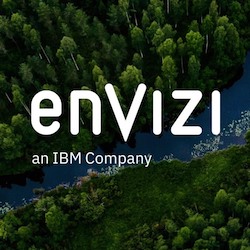The Energy and Utilities sector is undergoing rapid transformation, driven by decarbonization goals, changing consumer demands and technological advancements. In this changing environment, the sector is confronted with new market pressures, heightened competition, an increased risk of cyberattacks, and pricing pressures imposed by competition, governments and regulators. The result? An impetus to innovate, transform and remain competitive.
However, while modernization is essential for future resilience, necessary system updates can lead to costly downtime. This shift demands unprecedented levels of accurate and timely data, requiring the dismantling of silos and the implementation of new systems for managing federated data organization-wide. CGI’s annual proprietary research, Voice of Our Clients (VOC), indicates that, unlike other industries that are becoming more confident in their data, confidence in the Energy and Utilities sector has decreased by as much as 10%.
So, what are executives in Energy and Utilities prioritizing in 2024 to ensure they keep pace with data-driven transformation while advancing their decarbonization goals and maintaining a strong market presence?
Turning information into innovation: Data as a strategic asset
Data and analytics are critical enablers to navigate this transition, but simply collecting more data is not enough. Forward-thinking Energy and Utilities executives are treating data as a strategic asset, not just an IT concern. This means investing in data quality, governance and management capabilities , breaking down data silos to enable enterprise-wide analytics and upskilling the workforce to become more data-literate.
The real value comes from using data to gain insights that inform strategic decisions and optimize operations. Key focus areas include:
- Predictive maintenance to reduce outages and extend asset life
- Demand forecasting to balance supply and demand
- Customer segmentation for personalized services and programs
- Grid optimization for integrating renewables and distributed energy resources
When it comes to your data, the key question is: “What is your story?” What is the data telling you to do in your specific geography, within your distinct business? Organizations need a clear, tailored approach for turning data into actionable insights and models that scale beyond proof-of-concept (POC), foster resilience and drive unique business value.
Reimagining data for AI success: Practical beats novel when it comes to outcomes
Leaders in Energy and Utilities face vast opportunities: develop practical AI data strategies, adopt new artificial intelligence (AI) tools, enhance cybersecurity and enjoy the rewards. However, some are hesitant to embrace large-scale changes due to reliance on traditional, trusted methods.
In the early stages of exploring AI use cases, it’s paramount your organization has a mature, comprehensive data strategy. AI tools are only as good as the data they are trained on, and while many organizations are sitting on troves of actionable data, they lack the strategy to leverage it in real time to drive results. Additionally, leaders should focus on practical, industry-focused AI solutions that move to production, scale across the enterprise and deliver true outcomes.
A key example of effective AI innovation within the industry is "digital twin" technology to create real-time digital replicas of energy systems. This allows organizations to monitor and optimize operations effectively, enhancing real-time monitoring, predictive maintenance and customer service. By simulating complex systems, digital twins are becoming essential for reliable energy delivery and customer satisfaction.
Securing the future: Cybersecurity must be ‘baked-in’ to the business
As Energy and Utilities organizations become more data-driven, cybersecurity becomes even more critical. This was highlighted again in CGI’s 2024 VOC global research as the top concern for both the lines of business and information technology (IT) teams.
With AI tools accelerating the ease and efficacy of cyberattacks, the industry must modernize and adapt by using AI to strengthen operations and counter potential threats to the energy grid. To effectively respond to evolving threats and changes, both IT and business teams must adopt new practices that boost agility and adaptability.
Implementing industry-specific AI models, optimizing end-to-end processes and implementing a robust data security strategy are key to enabling confident decision-making, ensuring executives act on trusted, tested and protected insights.
Borrowing brilliance: Unlocking new perspectives from cross-industry insights
The democratization of energy is allowing new companies from various sectors to enter the industry, introducing unique tools and capabilities. This shift from energy being a scarce resource controlled by a few to a widely accessible product is fostering competition and encouraging the adoption of innovative technologies throughout the sector.
For example, banking offers lessons in handling high-volume data and manufacturing provides IoT and operational technology insights. This cross-industry knowledge transfer is increasingly valuable as sector boundaries blur, and executives who venture beyond traditional concepts are gaining a competitive advantage in uncovering new innovations.
Charting your unique path forward: Foster agility to follow the data
While these trends apply broadly, each organization needs to chart its own unique path based on its specific circumstances, goals and constraints. Key questions to consider:
- What story is your data telling you about opportunities in your geography and business?
- How can you leverage data to support your strategic priorities?
- Is your organization agile enough to act on data-driven insights?
- What capabilities do you need to build or acquire?
Organizational agility becomes critical when refining strategies and priorities. When navigating the path forward, there is no “one-size-fits-all” approach. The key is to start with a clear vision, assess your current state and develop a roadmap tailored to your needs. Let data guide your strategic direction, even if it challenges existing assumptions.
From strategy to success: Actionable recommendations for Energy and Utilities organizations
As leaders in the industry begin facing a period of significant change, here’s what CGI advises:
- Adapt to rapid shifts within the energy market using data strategy, automation, cloud solutions and other modernization efforts.
- Prioritize cybersecurity efforts to enable safe, secure, and reliable use of new technologies and harden your organization against cyberattacks.
- Bolster data practices and create a roadmap to drive actionable insights – in both business and IT environments – with the goal of improving business outcomes and adjusting to the demands of new technologies such as AI.
- Focus on practical, industry-focused AI applications and use cases to avoid lost time and resources on experimentation.
- Push for tighter cultural and organizational alignment in IT and business to improve response time and increase unity.
By harnessing data-driven transformation and developing the capabilities to extract actionable insights, Energy and Utilities organizations can not only navigate industry disruptions and successfully leverage the rise of AI, but also craft a compelling business success story powered by their data that delivers the true results and ROI-led outcomes they are seeking.
Author Peter Warren is VP and global industry lead for energy and utilities at CGI. Related: Read more CGI guest blogs here.




